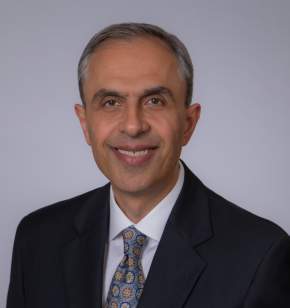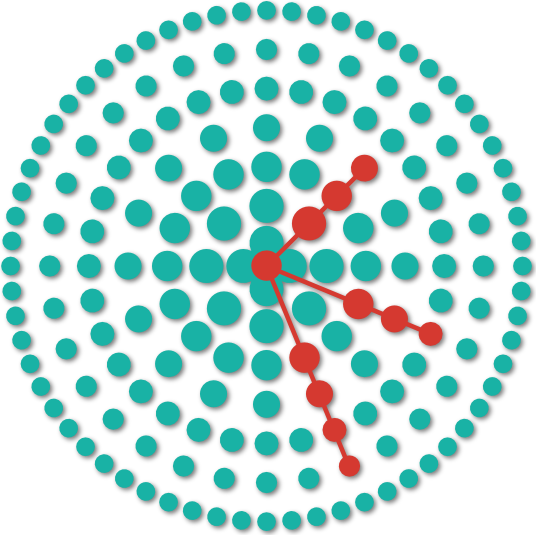Causes of Cavernous Malformations


Cavernous malformations are clusters of abnormally formed blood vessels in your brain or spinal cord. They can range from less than 1 cm to 5 cm (about 0.5 to 2 inches) in size. Because this is a relatively rare condition, a diagnosis of cavernous malformation can be unsettling. While learning more about the condition, you might wonder about its causes and if there are ways to prevent it from happening to your loved ones.
So, what causes cavernous malformations to occur? Can a patient or healthcare provider do anything to prevent them? In this article we will explain the origin of cavernous malformations.
Cavernous Malformations vs. Arteriovenous Malformations
Several conditions can lead to blood vessel abnormalities, but cavernous malformations and arteriovenous malformations are 2 more common ones. Although they seem similar in symptoms and complications, there are notable differences between them. Knowing these differences allows a patient to make the most informed decision possible about their treatment, leading to a more favorable prognosis.
In an arteriovenous malformation (AVM), a cluster of abnormal blood vessels receives blood from an artery (feeding artery) and allows blood to exit from a vein (draining vein). Because arteries are designed to propel freshly oxygenated blood across long distances, they have thick walls and are under higher pressures. If an arteriovenous malformation ruptures, bleeding into the surrounding brain can be severe and cause devastating neurological symptoms.
In contrast to an arteriovenous malformation, a cavernous malformation is a cluster of abnormal blood vessels that lacks a feeding artery and draining vein. Instead, cavernous malformations are dilated, thin-walled abnormal vessels that are under much lower pressures than an arteriovenous malformation. Minor bleeds may be more frequent in a cavernous malformation because of its leaky walls. Rupture often causes less severe consequences than in an arteriovenous malformation.
Risks of a Cavernous Malformation
The most significant concern for a cavernous malformation is the risk of bleeding and irritation of the surrounding brain (intracerebral hemorrhage), as well as the development of symptoms such as seizures or other neurological issues. Neurological problems can include weakness, numbness or tingling, speech difficulties, confusion, vision problems, or even trouble with walking. The exact symptom will depend on the location of the cavernous malformation.
If a cavernous malformation was an incidental, or unexpected finding on magnetic resonance imaging (MRI), the chance of it bleeding into the brain is extremely low, less than 1%. However, the risk of bleeding is increased if any of the following are true:
- The cavernous malformation has bled previously, or you initially see the doctor because of symptoms caused by a bleeding cavernous malformation.
- The cavernous malformation is in the brainstem.
The 5-year risk of developing seizures is also low (4%–6%) for both incidentally found cavernous malformations and those with symptoms. Understanding the risks and potential consequences of bleeding and the risks of developing future symptoms such as seizures is important when weighing your treatment options.
Generally, cavernous malformations that are incidentally found are typically at low risk for bleeding and the development of seizures. In such cases, simply monitoring the cavernous malformation over time may be the best option. However, if you are experiencing neurological symptoms such as headaches and seizures, other treatment options may be needed.
Why should you have your surgery with Dr. Cohen?
Dr. Cohen
- 7,500+ specialized surgeries performed by your chosen surgeon
- More personalized care
- Extensive experience = higher success rate and quicker recovery times
Major Health Centers
- No control over choosing the surgeon caring for you
- One-size-fits-all care
- Less specialization
For more reasons, please click here.
What Causes Cavernous Malformations?

Figure 1: Characteristic “popcorn” or “mulberry” appearance of a cavernous malformation.
Cavernous malformations are likely to occur before or shortly after birth although they may develop any time during your lifetime. Over time, they can increase or decrease in size. There are two types of cavernous malformations: sporadic and familial. Sporadic malformations happen randomly, whereas familial malformations are hereditary and occur as a result of genetic mutations that are passed down from parent to child.
Both familial and sporadic cavernous malformations are typically the result of a mutation in the CCM1 (KRIT1), CCM2 (MGC4607), and CCM3 (PDCD10) genes. Based on the inheritance pattern of these genes, a child of a parent with these gene mutations has a 50% chance of inheriting the faulty gene. However, not everyone with the gene mutation will develop cavernous malformations.
Research so far has not found precisely what causes these mutations. However, genetic testing can provide a diagnosis in familial cases. Once the diagnosis is known, families and healthcare providers can determine next steps in terms of the frequency of monitoring and imaging.
Besides their association with the 3 CCM genes, cavernous malformations have also been reported to form after radiation therapy in rare cases. Traumatic brain injury has not been shown to definitely cause vascular malformations.
Is There a Way to Prevent Cavernous Malformations?
Cavernous malformations can result from a genetic mutation that causes abnormal development of blood vessels. Although it is possible to detect a mutation in patients with a family history of malformations, it is not yet possible prevent cavernous malformations from occurring. Dealing with cavernous malformations involves monitoring, managing symptoms, or considering treatment options such as surgery when possible.
Cerebral Cavernous Malformations and Alcohol
Researchers have observed that alcohol consumption while pregnant is associated with decreased levels of CCM3 proteins in the brain in mouse models. Because normal CCM3 is involved in the development of blood vessels, this raises the question whether alcohol is associated with the formation of cavernous malformations.
Currently, there is no evidence to say that alcohol use contributes to cavernous malformation development. In general, however, excessive alcohol use increases your risk for many other chronic health conditions such as high blood pressure, heart and liver disease, stroke, and various cancers. Alcohol use while pregnant is also harmful to the baby and should be avoided.
Key Takeaways
- Cavernous malformations are caused by genetic mutations that occur randomly or are passed down from a parent.
- The exact reason for why this mutation happens is unknown.
- Genetic testing can detect mutations in patients with a family history of vascular abnormalities.
- Unfortunately, there is currently no way to prevent cavernous malformations from occurring, but treatment options are available.











